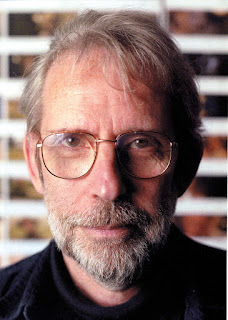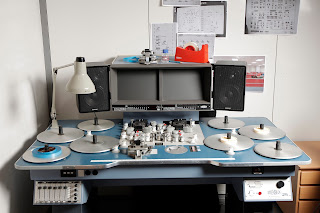 Use of sound - The sound of hard footsteps could also be a hear beat, a glock or even the shooting of a gun.
Use of sound - The sound of hard footsteps could also be a hear beat, a glock or even the shooting of a gun.Sound design is the process of layering the sounds and effects to create a single soundtrack on a project.
You should take as much time on the sound as you would do on the camera, even if you would not think it is important (but it is)
In the 1970's a demand for more complex sound tracks created the need for a sound editor.
The first person to be credited for it was Walter Murch ->
Apocalypse Now: https://vimeo.com/6784121
Commonly there will be 5-20 layers of sound in a project.
Sound Tracks:
Dialogue: Recorded on the actual shoot, voiceover on a separate track.
Sync: Recorded from the shoot which is not dialogue, ie: someone walking across the end
ADR (Automatic dialogue replacement): Dubbed over after the film
FX: Certain sound effects, for example a car engine, recorded specifically for production or Sound FX Library, which can be found online, through the software or even Foley Artist sounds.
Atmos: Sound effects that make up the atmosphere for a particular location.
Music: Diegetic music on a radio or similar or Non- diegetic added in afterwards.
Compiling all the tracks, making creative decisions all the time that fit the action. On big productions, each track will have one person assigned to them, FX for one person, Dialogue for another for example.
The mix is compiling all the tracks into one single track, this is the most creative part as you are deciding what you hear. Still editing in the mix phase.
The art of sound design is to make it feel right for what we are seeing, and to add depth, even if it is a vastly different area it still has to sound right. A clock ticking, a dog barking - that much detail.
Art of silence - Hearing things that you would not normally hear, by having the sound of a fly etc it shows how quiet the scene is. To create silence you have to add in sound.
You don't have to add music to create tension, it can be sound effects.
However you can do it entirely through music if you feel it fits well.
You need to create a specific emotional moment and this is done with sound design.
Spending double what they spent shooting a film in the soundtrack and sound design. When you are planning and shooting, think about the audience will hear.
Sound Recording Tips:
Always get as close as possible with the mic.
If it is windy, try and position the actor with their back to the wind.
Always use a buzz track so you can add into the background of the edit - 1 minute of nothing so you can have that as backing track.




























